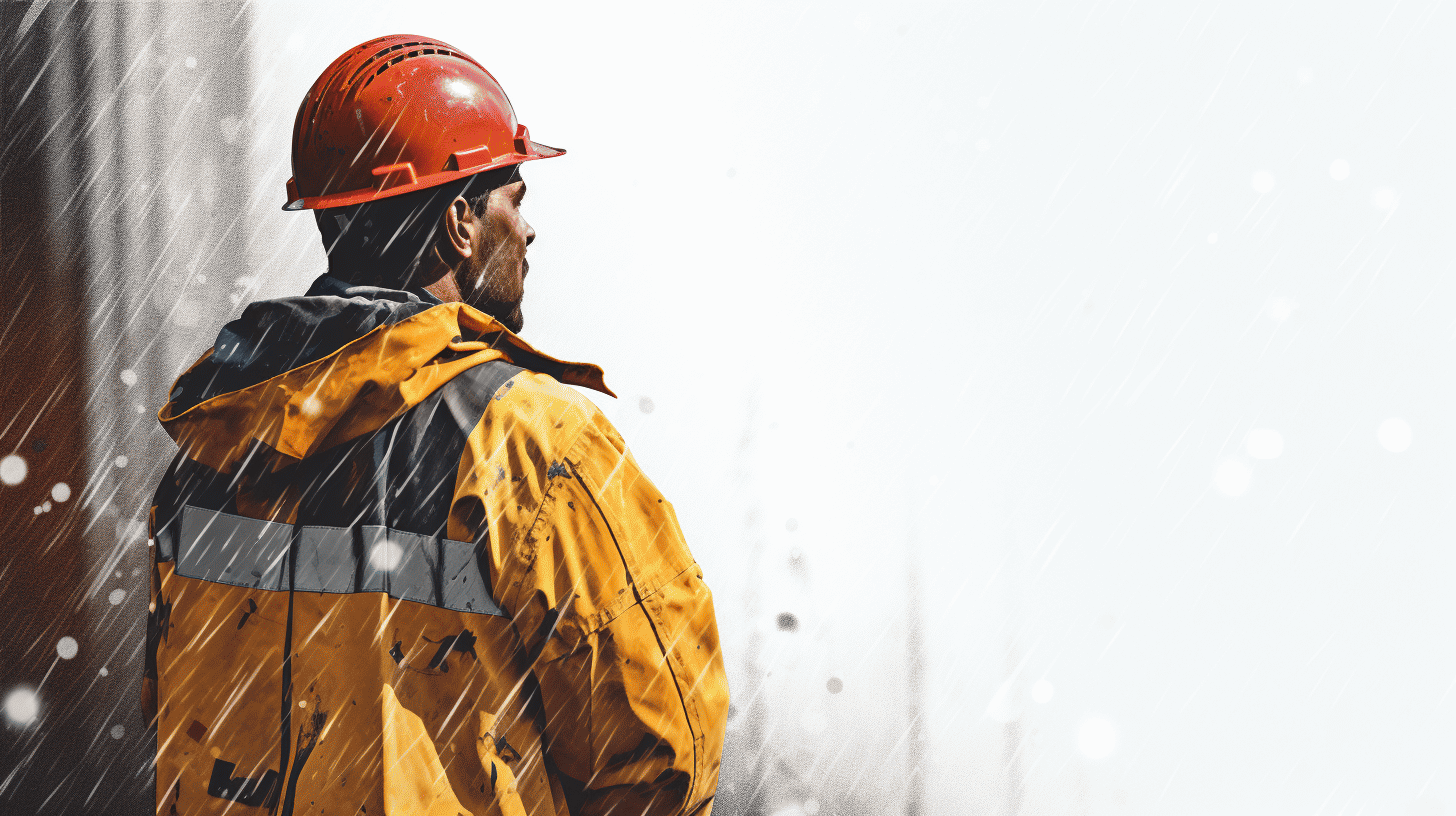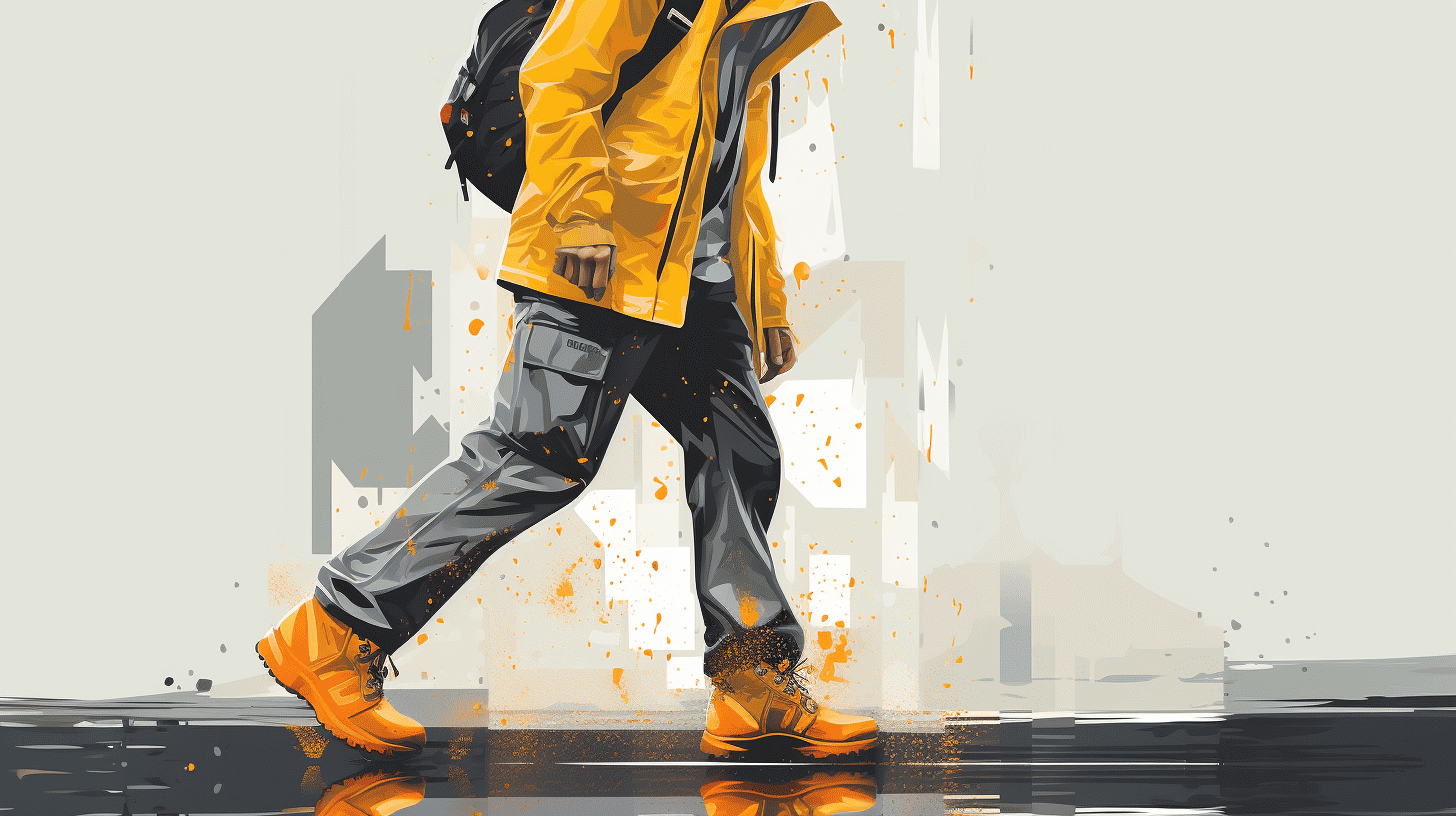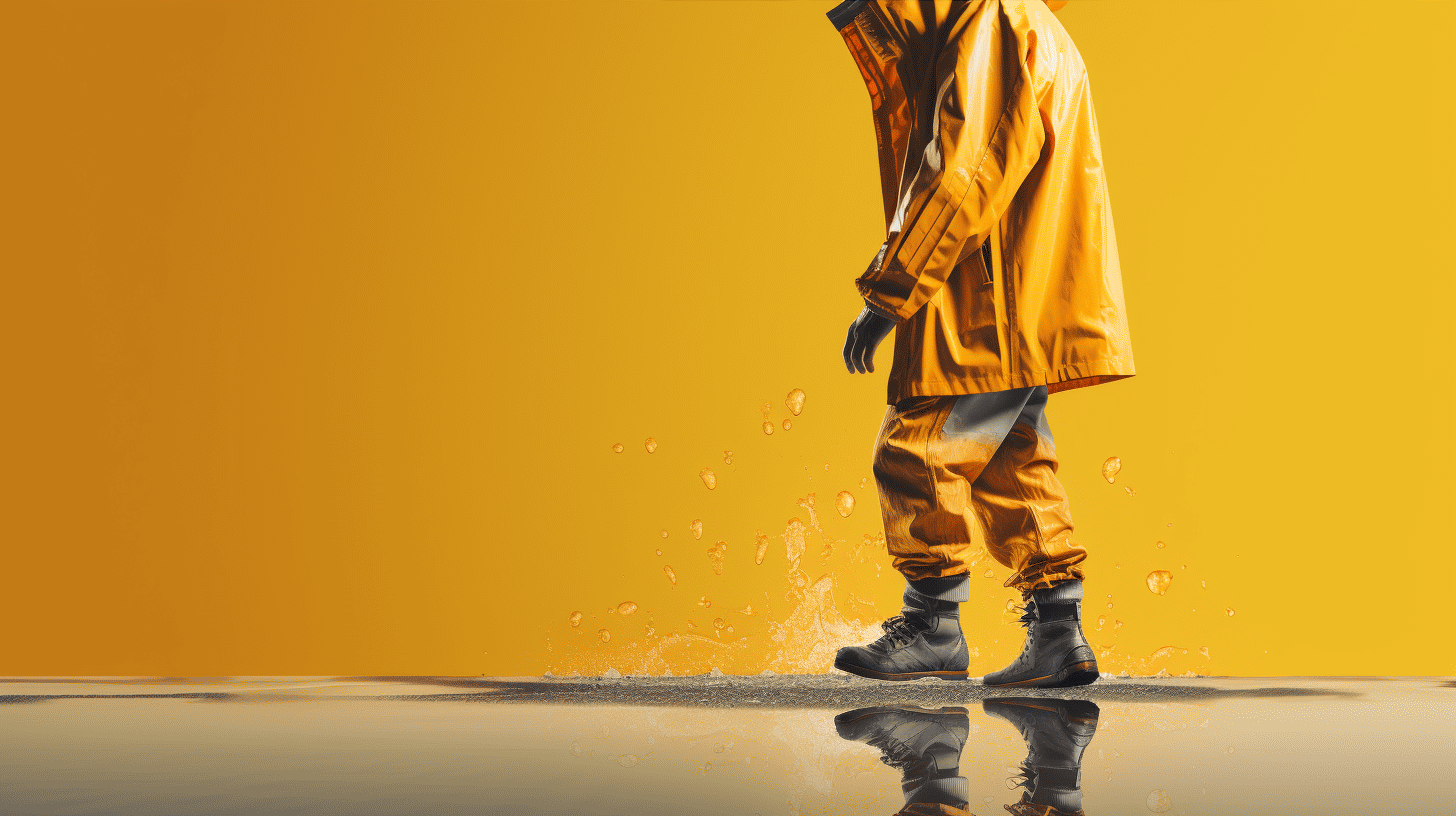The construction site is a bustling hive of rigorous activity, where every worker plays a crucial role in bringing the architectural dream to life. However, inclement weather, particularly rainfall, can often disrupt the rhythm of construction work – turning the site into a muddy struggle rather than a smooth operation. One way construction workers can maintain their productivity and safety during a downpour is by dressing in the right rain gear.
This article serves as a comprehensive guide for construction workers in their quest to find rain gear that checks all the boxes: waterproof, breathable, durable, and functional. We'll delve deep into why proper rain gear is a non-negotiable necessity in the field, what features to look for, how to choose and maintain your gear, and even touch on the safety regulations and standards set by governing institutions around the world.
Remember, it's not just about staying dry – it's about equipping oneself with a defensive shield that will keep you safe, comfortable, and productive under the relentless wrath of a rain shower. Whether it's a light sprinkle or a heavy downpour, don't let rain stop you from building wonders. Let's get into the nitty-gritty of suitable rain gear for construction workers, shall we?
Importance of Proper Rain Gear
When it comes to facing harsh weather conditions, having the right gear is of utmost importance. Rain, in particular, can pose a number of challenges, whether it be to outdoor enthusiasts, construction workers, or anyone simply trying to commute in the midst of a downpour. From ensuring unhindered work routines in adverse weather to providing much-needed safety, protection, and comfort, selecting the proper rain gear can profoundly impact productivity and general wellbeing.
Effective Work in Harsh Weather
The ability to carry out tasks effectively, irrespective of the weather, is not just a unique advantage - it is often a necessity, particularly for certain professions. Properly designed rain gear, such as waterproof jackets, pants, and boots, allow the hard-working farmers, dedicated construction workers, and enthusiastic hikers to withstand the rain-soaked environments without a hitch.
- Waterproof materials ensure protection from moisture, preventing the user from getting drenched and uncomfortable.
- Seam-sealed construction prevents water from seeping in, thereby ensuring complete dryness.
- Core-heat thermal technology present in some quality gear ensures warmth in chilly, wet conditions.
Safety and Protection
The significance of proper rain gear goes beyond physical comfort. It's a critical aspect of personal safety and protection when working or moving in rainy conditions. The right gear helps maintain visibility, protect against potential hazards, and helps regulate body temperatures, all of which are vital for minimizing risk.
- High-visibility jackets and trousers make the user discernible, preventing mishaps in low-light rainy conditions.
- Waterproof footwear with anti-slip soles can make all the difference between a regular day and an accident-prone one.
- Items such as waterproof hats or hooded jackets ensure the head, one of the body's most heat-sensitive areas, remains dry and warm.
Comfort and Productivity
Being comfortable is instrumental to remaining productive. With the correct rain gear, you aren't just wearing a layer of protection; you're donning a tool that can impact your output and performance.
- Breathable fabric allows for better circulation and elongated use without discomfort.
- Gear designed with adjustable elements (cuffs, waistbands, etc) allows for a better fit, enhancing comfort.
- Lightweight and easy-to-store rain gear reduces the burden when the rain stops and the sun decides to peek from behind the clouds.
Protecting yourself from the unpredictable elements need not be a challenge. High-quality and well-chosen rain gear can shield you from the rain, allowing you to focus your energies on the task at hand rather than battling the weather. Whether you need to brave the storm for work or leisure, proper rain gear is more than a worthwhile investment; it’s a necessity. Invest in your safety, comfort, and productivity today with some stellar rain gear.
Key Features to Look for in Rain Gear
Splish, splash! When the forecast calls for downpours, do you have the right gear to tackle the rain? Exploring in wet weather requires trustworthy and effective protection to keep you dry and comfortable. Therefore, it's necessary to understand the key features to look for in rain gear. Let's investigate the following features with an emphasis on waterproof capability, breathability, durability, ease of movement, and visibility.
Waterproof Capability
The very essence of rain gear is to keep you dry, right? Therefore, the level of waterproofing is absolutely non-negotiable. Look for gear that boasts optimal waterproof capabilities. Pay attention to the type of material used, and select rain gear that features a waterproof membrane or coating. Also, lookout for details like sealed seams and waterproof zippers which prevent water leakage.
Breathability
While staying dry is the priority, nobody wants to feel swamped in their own sweat. This is where breathability comes in. Breathable rain gear allows perspiration to escape, preventing you from feeling sticky and uncomfortable. Advanced technology fabrics like Gore-Tex are designed to offer high breathability, ensuring you stay comfortable even during strenuous activity.
Durability
When investing in rain gear, you'll want it to last a few seasons. Durability is key, specifically in terms of the gear's ability to withstand harsh weather conditions and rough usage. Check the quality of stitching, material strength, and resistance to wear and tear. Remember, good quality rain gear is a cost-effective investment in the long run.
Ease of Movement
Whether you're hiking up a hill or negotiating a busy city street, you want your rain gear to allow easy movement. Look for features such as adjustable cuffs, roomy cuts, and articulated joints. Remember, the best rain gear should fit well but also let you move freely.
Visibility
Lastly, be aware of visibility. In heavy rain, visibility often decreases, which can be a safety concern especially if you are cycling or walking in populated areas. Opt for rain gear in bright colors or with reflective elements to ensure you can be easily spotted.
By focusing on these key features, you can feel confident selecting the right rain gear that meets your personal needs and matches your activity level. Remember, staying dry doesn't have to mean sacrificing comfort or style. Armed with this knowledge, you'll be ready to conquer any rainstorm without dampening your spirit. Stay dry, friends!
Choosing the Right Rain Gear
Choosing the right rain gear can make a world of difference on a wet and windy day. When nature decides to unleash her liquid fury, you'll want to be prepared with attire that will keep you comfortably dry. In this article, we'll guide you through essential rain gear including rain jackets, rain pants, waterproof boots, waterproof gloves, and even hard hat rain covers. Each component has its unique set of attributes that make it a vital part of your rainy-day attire.
Rain Jackets
An effective rain jacket should offer excellent waterproof features while also providing breathability. You don’t want to get soaked from rainwater, but neither do you want to be drenched in perspiration. High-quality rain jackets are designed with this balance in mind, using materials that repel rain but still allow sweat to evaporate.
- Look for jackets that have a waterproof rating of at least 10,000mm.
- A breathable fabric will prevent overheating and sweating.
- Some jackets include a hood for extra protection.
Rain Pants
Equally critical as the rain jacket, rain pants shield your lower body from the splashes and downpour. Many people overlook the importance of good rain pants, but wet and cold legs can make outdoor raining conditions absolutely miserable.
- Rain pants should have a similar waterproof rating to your jacket.
- Look for pants with elasticated or adjustable waists for added comfort.
- Like jackets, make sure your pants provide breathability.
Waterproof Boots
Damp feet can quickly ruin an otherwise perfectly good day. After all, is there anything quite as discomforting as the squelch of water in your boots as you walk? Waterproof boots are designed to keep your feet dry and warm, providing excellent traction on slippery surfaces.
- Ensure your boots are truly waterproof, not just water-resistant.
- Look for boots with an insulated lining for added warmth.
- Gripped soles help prevent slipping on wet surfaces.
Waterproof Gloves
And let’s not forget our hands - investing in a solid pair of waterproof gloves will pay dividends when the heavens open. Remember, wet hands can lead to skin issues, and reduced dexterity makes tasks more challenging to perform.
- Waterproof gloves should be lined for warmth and comfort.
- Gloves with added grip help hold items and equipment securely.
- Breathability is just as crucial for gloves as it is for jackets and pants.
Hard Hat Rain Covers
If you’re working outdoors in the rain, don’t neglect your hard hat. A well-fitted rain cover can keep the rain from trickling down your neck and back.
- Make sure the cover fits properly over your hard hat.
- Clear covers can ensure your visibility isn’t hindered.
Ultimately, the right rain gear will depend on your specific needs, the severity of the weather, and personal comfort. Making informed decisions about each piece of gear -from rain jackets all the way to hard hat rain covers- can make your rainy days safer, drier, and ultimately, more comfortable. Rainy days don't have to be dreary, not when you're well equipped with high-quality rain gear.
Maintaining Your Rain Gear
Maintaining your rain gear shouldn't feel like a Herculean task. In fact, with adequate knowledge, a pinch of effort, and our helpful guide, you can prolong the life of your gear and stand up to any storm with confidence. This article will explore effective methods for rain gear upkeep, delving into cleaning and storage, regular inspection, and the essentials of repairing damage.
Cleaning and Storage
Keeping your rain gear clean and well-stored starts with understanding its fabric. Each type has unique requirements, but there are some general practices suitable for all:
- Gentle Cleaning: Wash your gear gently using mild detergents.
- Thorough Rinsing: Rinse thoroughly to ensure no detergent residue lingers to damage the waterproof coating.
- Air Drying: Air dry your gear after washing. Heated drying can degrade the fabric and the waterproof coating.
- Proper Storage: Store your gear in a cool, dry place, ideally hung up rather than folded to prevent creases and damage.
Imagine this: You've returned home after a rainy outdoor adventure. While it's tempting to just leave your wet gear and relax, taking the time to clean and store them properly will ensure their longevity.
Regular Inspection
A routine check is essential in maintaining the effectiveness of your rain gear. Over time, you may notice some common wear and tear such as:
- Peeling or flaking on the inner linings
- Worn-out areas, particularly on high-friction sections like the shoulders and elbows
- Leaky seams or zippers
By proactively addressing these signs of wear, you can prevent minor problems from escalating into major ones. As with many things in life, an ounce of prevention is worth a pound of cure when it comes to rain gear.
Repairing Damage
Despite our best efforts, damage to our rain gear can occur. The good news is, minor issues like small tears or leaks can be repaired at home. Here's where you can roll up your sleeves and implement some DIY magic!
You can fix a leaky seam or patch small holes using a waterproof sealant or a fabric repair tape, respectively. For zipper issues, a quick application of a lubricant like wax can often alleviate the problem. If the damage is more severe, consider reaching out to the manufacturer for professional help or replacement options.
Your rain gear is a trusty companion during wet weather. With a little TLC, you can ensure it's always ready to protect you from the elements. So, embrace these maintenance guidelines and keep enjoying your rainy day adventures without impediments.
Safety Regulations and Standards for Rain Gear
Investing in high-quality rain gear is perhaps one of the most effective ways to ensure personal safety during adverse weather conditions. However, it's not just about the material or comfort that your gear offers; it's also about ensuring it adheres to defined safety regulations and standards. Globally, different bodies, such as OSHA, ANSI/ISEA, and the CE Mark, set these standards. Understanding them can guide you in selecting the best and safest rain gear. Let's take a closer look at each regulation and what it entails.
OSHA Regulations
Understanding the Occupational Safety and Health Administration's (OSHA) regulations on rain gear can ensure you make a safe choice. OSHA insists that employers provide personal protective equipment, including rain gear, for workers prone to work in inclement weather conditions. The goal is to reduce work-related injuries and illnesses due to limited visibility or slip-and-fall accidents in wet environments.
Here are a few attributes of OSHA-approved rain gear:
- High visibility: According to OSHA, rain gear must enhance the wearer's visibility during daytime and nighttime.
- Water-resistant: The gear should offer optimal water resistance to keep the wearer dry.
- Comfortable and flexible: Workers should be able to wear it for extended periods without discomfort. Also, the gear should not interfere with the movements necessary to carry out work tasks.
ANSI/ISEA Standards
The American National Standards Institute (ANSI) and the International Safety Equipment Association (ISEA) have also set standards for rain gear. Their focus is on high-visibility safety apparel, which includes rain gear. The core aspects ANSI/ISEA standards are:
- Chromaticity, luminance, and performance class: These factors ensure appropriate visibility in diverse lighting conditions and backgrounds.
- Amount of reflective material: ANSI/ISEA standards require a minimum amount of reflective material that varies based on the gear's designated performance class.
CE Mark Standard
In Europe, the 'CE' mark on a product, including rain gear, symbolizes its compliance with the European Union's safety, health, and environmental requirements. Some features of CE-approved rain gear include:
- Water resistance: CE-marked rain gear is certified for water impermeability.
- Tear resistance: The gear must fulfill specific tear-resistance criteria.
- Strength of the seams: The seams should achieve a certain strength to ensure the overall durability of the gear.
Choosing rain gear that aligns with OSHA, ANSI/ISEA, and CE Mark standards not only ensures your safety but also gives you peace of mind in adverse weather conditions. By adhering to these regulations and standards, you can trust that your rain gear will hold up under even the harshest conditions.
Conclusion
Whether you're on a construction site or hiking in the Pacific Northwest, quality rain gear is an essential part of your gear. It keeps you dry, safe, and comfortable in adverse weather conditions, which in turn enhances productivity and minimizes the risk of weather-related illnesses and injuries.
Remember, the key to choosing the right rain gear lies in prioritizing the features that matter the most. Always verify if the gear is 100% waterproof, breathable, durable, comfortable, and compliant with industry standards. The maintenance and care of your gear are equally important to guarantee its longevity and effectiveness.
Those in need of premium rain gear might be interested in Hurricane Raingear's products. This company excels in providing top-quality rain gear handcrafted in the Pacific North West, blending waterproof traits with breathability while ensuring durability, comfort, visibility, and ease of movement.
In essence, with the right rain gear, such as those offered by Hurricane Raingear, you can confidently face the harshest weather conditions, ensuring the weather never holds back your productivity and safety. Remember, a sound investment in durable rain gear can protect you against the unexpected weather changes and keep you comfortable and safe in challenging outdoor conditions.
Frequently Asked Questions
-
What are the essential rain gear items for construction workers?
The essential rain gear items for construction workers include waterproof jackets, pants, boots, hats, and gloves. It's also recommended to have a waterproof backpack or bag to protect personal belongings.
-
What should I consider when choosing rain gear for construction work?
When choosing rain gear for construction work, consider factors such as material quality, waterproof rating, breathability, durability, visibility features (reflective strips), ease of movement, and comfort. Additionally, check if the gear is compliant with safety regulations.
-
How can rain gear improve the comfort and safety of construction workers?
Rain gear improves comfort and safety by keeping construction workers dry, preventing them from getting wet or cold, reducing the risk of hypothermia or illness. It also enhances visibility on rainy days, reducing the chances of accidents or mishaps on the job site.
-
Can I use regular rain gear for construction work?
While regular rain gear may provide some level of protection, it's recommended to use rain gear specifically designed for construction work. Construction rain gear often offers additional features like reinforced fabric, pockets for tools, and high visibility elements.
-
How do I maintain and care for my construction rain gear?
To maintain and care for your construction rain gear, follow the manufacturer's instructions. Generally, it involves cleaning the gear regularly, avoiding harsh chemicals or bleach, drying it properly, and storing it in a clean and dry place to prevent mold or mildew.























Leave a comment
This site is protected by hCaptcha and the hCaptcha Privacy Policy and Terms of Service apply.